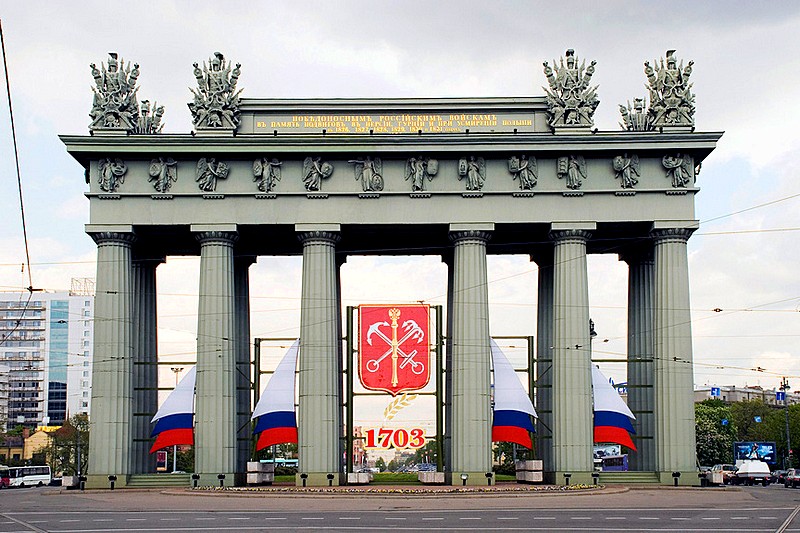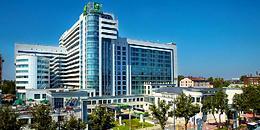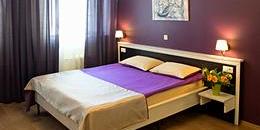The Moscow Triumphal Arch
The Moscow Triumphal Gates (1834-38) were erected in the memory of the Russian victory in the Russo-Turkish war of 1828. At first, city leaders planned to place the triumphal gates by Obvodny Canal but as the city limits expanded further to the south the site for the gates was moved to the intersection of the Moscow highway and the Ligovsky Canal. In this way, the gates not only became a triumphal structure but also an impressive gateway into the Imperial capital.
Two guard posts, which served as posts for century guards were also erected on both sides of the highway at the entrance to the city.

Famous Russian classical architect Vasily Stasov designed the Moscow Triumphal Gates. In fact, he originally developed two different designs for the gates before a life-size model of one of the designs was erected, and the project was confirmed on September 14, 1834. In the following year, Russian classical sculptor Boris Orlovskiy who also created the Kutuzov and Barclay de Tolly monuments in St. Petersburg between 1828-36, developed models of the sculpture details of the gates including war trophies and figures of geniuses.
Cast iron was selected as the chief material to be used in building the gates. The castings for the ends of the columns and walls located above the cornices, the forging from the sheets of copper sculpture details including the figures of geniuses, trophies and upper parts of the columns were produced at a local factory. The cast iron blocks for the columns were also cast in another local factory.
Each column was comprised of nine separate blocks together with the trunks and upper units of the columns. In fact, all 12 columns weighed approximately a combined 450 tons. The first column was erected on July 14, 1836. The gates were opened two years later on October 16, 1838. At that time, the Moscow Gates were the largest structure in the world made of cast iron.
The monumental portico made of powerful columns symbolized the greatness and glory of the Russian army. The war victory theme was further underlined with the sculpture compositions of war trophies of signs and weapons.
Moreover, the use of a frieze of 30 sculptural figures of genius made from copper sheets according to seven different models in the Moscow Triumphal Gates was considered an architectural innovation of the day.
Perhaps echoing the essence of the Russian army victory itself, the main concept behind the gates was raw and simple power. This concept is also inherent in most of Stasov's designs in St. Petersburg including the Lenenergo building (1817-21), the Trinity (1827-29) and Troitsky (1828-35) cathedrals and the Narva Triumphal Gates (1827-34).
Due in part to the artificially raised foundation, the Moscow Triumphal Gates tower over the immediate surrounding area, and their strict and concise silhouette can be seen from a great distance.
On a par with the high art meaning of the architectural concept, one can also see the great talent of Stasov in the monument. Indeed, he managed a very difficult task in creating the unique memorial, which also bore witness to the high level of Russian construction techniques and casting at the time.
The Moscow Triumphal Gates fate has been uniquely tied to the history of the city. In the period of Stalin's concentration of power over the Leningrad leadership, the historic and symbolic gates were dismantled in 1936. And in 1941 when the Nazi's approached the outskirts of Leningrad, in a testament to the city's great resourcefulness the cast iron blocks of the gates were used in creating an anti-tank defensive structure near the southern border of the city which would help repel the Nazi's during the blockade. Finally, after the war had been won and the city was rebuilding, the gates were restored to their previous grandeur in the period 1958-60. A group of restorers led by architect I. Kaptsyug managed to replace most of the lost sculptural details of the monument. Moreover, the new columns, friezes and cornices were cast anew at the local Kirov factory.
Location: Ploshchad Moskovskie Vorota.




